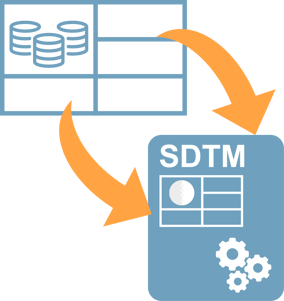On Jan 27th, 2017, CDISC quietly released a significant supplement to SDTM, the SDTMIG v3.2 Conformance Rules (i.e. Conformance Rules).

Why is this work package important?
- Since the publication of SDTM v1.2/IG v3.1.2 in 2008, this is the first set of SDTM conformance rules developed and owned by CDISC.
- In taking ownership of the rules, CDISC demonstrated a willingness, ability, and ideally, a long-term commitment to provide a more rigorous definition of SDTM.
- The Conformance Rules provide the SDTM implementation community with an unambiguous starting point for their SDTM conformance journey.
Prior to the Conformance Rules, the CDISC implementation community, including Life Science companies, vendors, and regulators, defined conformance rules for SDTM. Although this crowd-sourced SDTM conformance provided a solid foundation for SDTM implementers, confusion regarding the severity and validity of conformance issues persisted. For example, conformance issues with a severity of "Warning" may have more of an impact on the usability of the SDTM artifact than those with a severity of "Error."
The Conformance Rules took the best from the crowd-sourced efforts, added new rules, and, perhaps more importantly, the expertise of those who developed the SDTM IG. As mentioned above, the Conformance Rules are an unambiguous starting point for evaluating SDTM artifacts. d-Wise is of the opinion that Life Science companies assessing SDTM conformance (or conformance to any standard) must recognize these rules are only the starting point. All too often, our clients will tell us, "I fixed the Pinnacle 21 issues, but my data is still not usable."
In addition to the Conformance Rules, we believe Life Science companies must include the following in their SDTM conformance toolbox.

- Company-specific SDTM conformance rules: Although the Conformance Rules provide increased rigor, SDTM will always require interpretation. Life Science companies must ensure SDTM artifact conform to theirinterpretation of the standard as often, streamlined data analysis depends on it.
- Pragmatic manual review of SDTM artifacts: Programmatic checks will not ensure the scientific integrity
of all data points. For example, no programmatic check will ensure the medical appropriateness of a relationship between a concomitant medication given for an adverse reaction and the underlying adverse event. In an industry that strives for perfection, this manual review must be pragmatic focusing on key safety and efficacy data points.
- Workflows that reflect the iterative nature of clinical trials: Evaluating SDTM conformance is often a duplicative, laborious activity. The evaluation should reflect the state of the clinical trial. For example, many of our clients strive to have SDTM artifacts finalized before first-patient-in-study (FPI) and insist they perform complete SDTM conformance assessments with each new data extract just after FPI (i.e. a small number of subjects with a small number of data points). We have successfully worked with several clients to revise their workflows to limit their SDTM conformance assessments to those checks that meaningfully reflect the state of the data. For example, limiting the evaluation to the structure of SDTM artifacts and domains that contain historical data such as DM and MH.
Need help evaluating the conformance of your CDISC artifacts? Contact the CDISC experts at d-Wise.
